Valyntina Grenier’s approach to art redefines the manner in which we approach the world. In a mix of mediums, techniques, and materials, she composes pieces that flow from one to the next, challenging us to challenge our perceptions. Art Editor Morgan Fox talked with her about creating a landscape both dreamy and environmentally conscious.
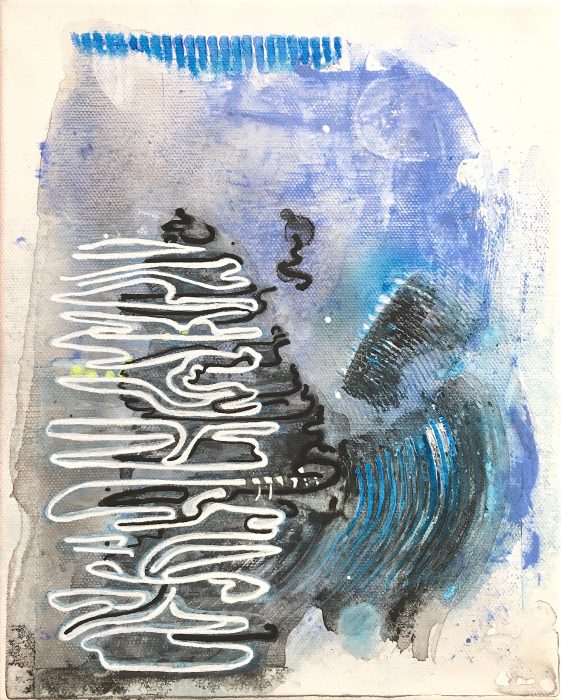
Morgan Fox: Normally I ask about process first, but I’m going to switch it up a little. I’m really interested in the marine theme of this series, from the titles to the patterns in the artwork itself that remind me personally of trilobites. What is the draw to the ocean for you? And/or, what was the inspiration for this series?
Valyntina Grenier: Thank you for inviting me to think about why and how I make what I do. One of my great joys in life is to swim in the ocean. I grew up in the high desert in California. Once I was able to drive, I often went “down below” to Venice Beach. It was so wonderful to get out of the desert and watch all the performance artists, to see what local artists were making and selling and to hang out on the beach. I graduated from high school at 17 and within a few months I moved to Los Angeles which got me much closer to the ocean. I lived in North Hollywood or Hollywood at a time when pollution and the phrase “Reduce Reuse Recycle” came into mainstream consciousness. From the early 90’s to the early aughts I was acting and modeling, but most of my friends were musicians. My first works for “Radio Ocean” began when I moved back to the desert, this time to Tucson, Arizona. I combined my nostalgia for life in LA and new knowledge of the Pacific garbage patch (a spiral of marine debris and pelagic plastic collecting and degrading in the ocean) to make art in a new medium. By breaking up old cassette tapes I created debris one might find floating in the Pacific or littered on Sunset Blvd. I impressed or embedded those plastic and metal parts into the encaustic medium essentially making art out of garbage trapped in wax.
The elements of the acrylic paintings that look like trilobites come from letting paint dry under recycled pieces of plastic, paper or parchment.
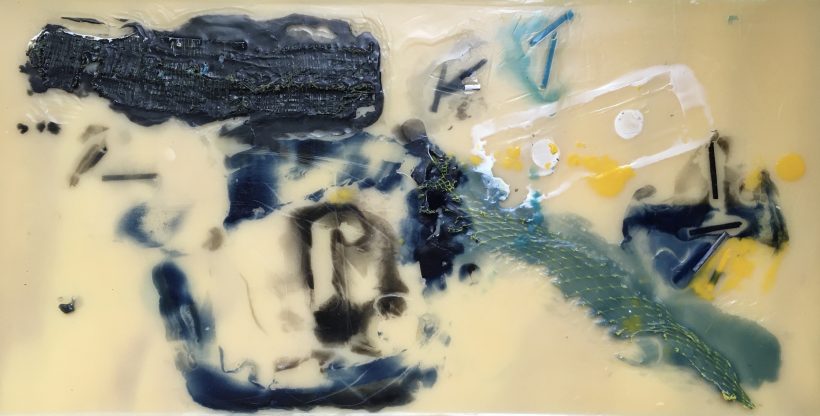
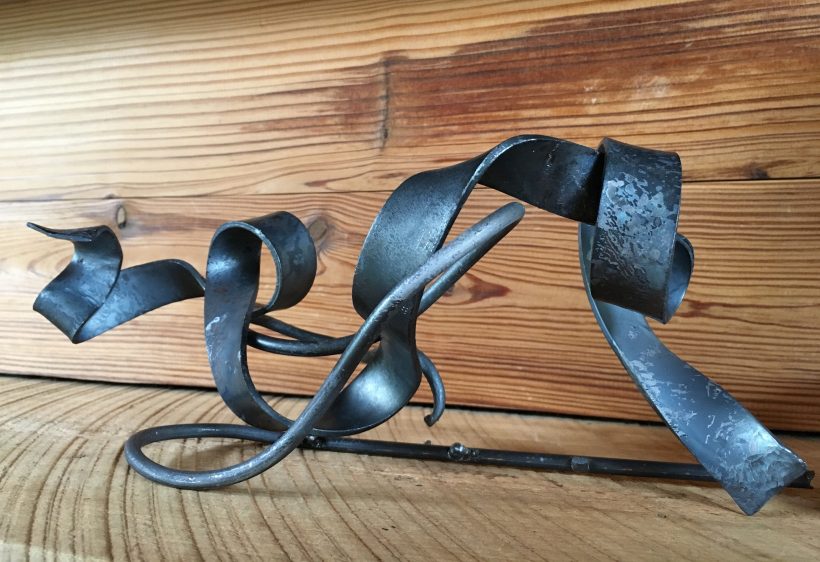
MF: Could you talk a little about your process?
VG: The acrylics all came from a desire to be free, to approach the canvas with no preconceived notion of what I was going to make. I allowed the materials to dictate the final result. They were all made in Austin, Texas where I lived during the spring while my wife was visiting faculty at the UT. All but “River Walk” were made in 2018, after Lana Turner expressed some interest in work from the series to be printed in black and white. Thinking of our drying planet and the “single use” garbage polluting our waterways and our land I decided to allow layers of paint to dehydrate under various scraps that would usually be tossed in the garbage or recycling bin. Once the paint dries, I peel off the scraps and repeat the process until the composition feels fairly balanced, then I go in with brushes, palate knives, pottery tools and paint markers to add depth, definition, and color. At the same time, I was taking a heat forming class through The Contemporary Austin. I got to experiment with a MIG welder and acetylene torch but I really fell in love with the forge and hammer and anvil. I had been working on drawings of a ribbon as I imagined one floating in air or water which culminated in the metal sculptures. I made the encaustic in Tucson in 2020. In the early days of what has become nearly a year of social quarantine I decided to go back to the process I began with my first pieces in the series.

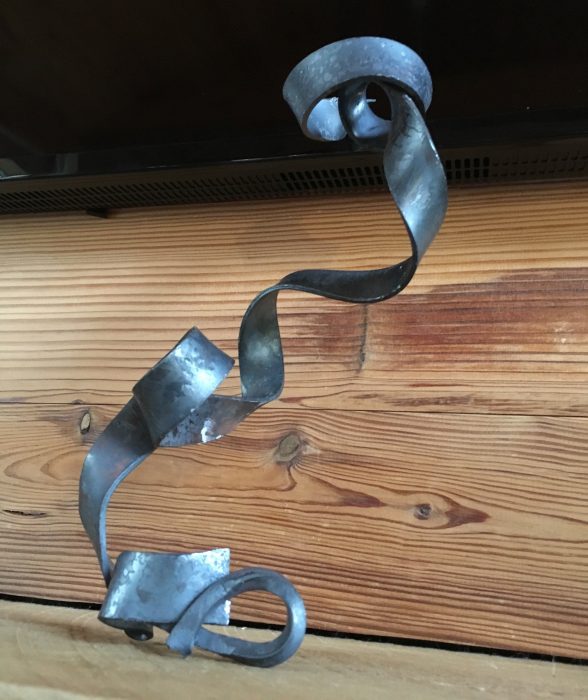
MF: This series is also multiple/mixed media, which isn’t something we get to see all the time, and here in particular there’s a great visual connection between the metal ribbons and the painted ribbons. What draws you to working in mixed media?
VG: I am mostly self-taught as a visual and installation artist. My lack of formal training has led to marrying techniques, tools and media from multiple practices. Because I was working on the metal ribbons and the paintings at the same time, I decided to paint the developing shapes of the metal ribbons onto the larger canvases.
Looking back to my childhood, poetry and memorizing and reciting poems was a part of my pre-school days. My grandmother wrote poetry and also painted and drew. When I was four or five, I asked her and she wrote a poem for me. Her gift was a great influence and inspiration to make poems and drawings for her and the other people I loved. Acting was the first art I appeared to have an aptitude for, but while working in the entertainment industry, I wrote poems and songs and drew and painted several paintings. I made a couple costumes and set pieces for an acting workshop. When asked why I would invest that kind of time to create something for a one-time performance, I realized that for me, work in “every art feeds another.” Now, I hope it leads to innovation or at least new approaches and ideas.
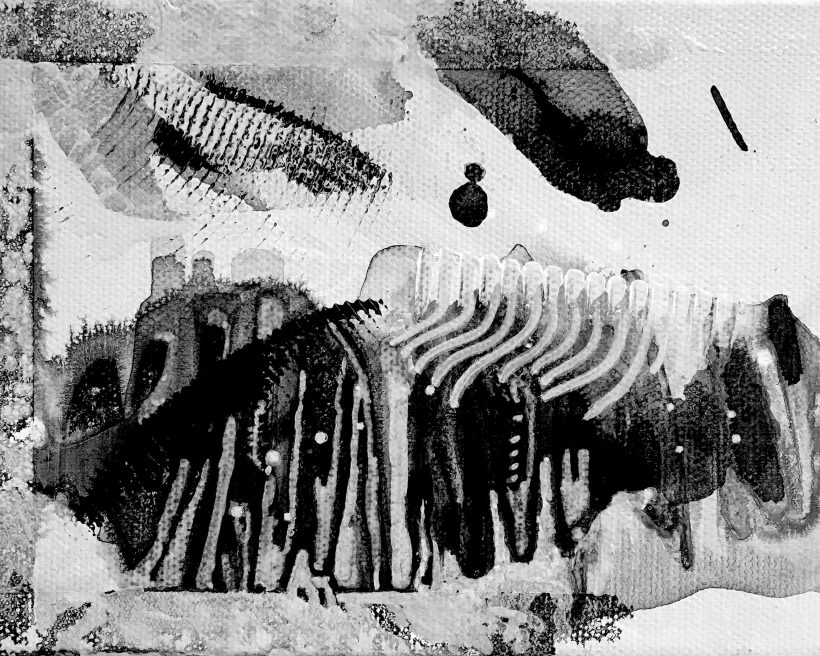
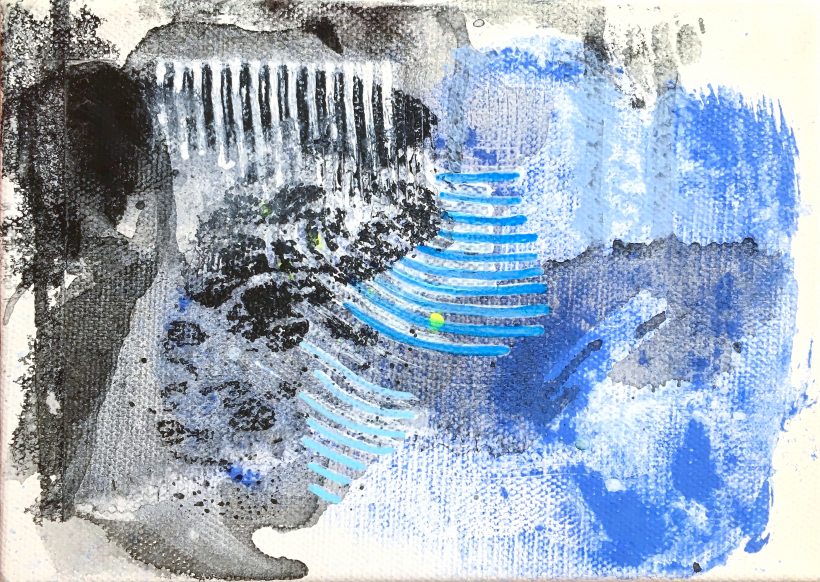
MF: You mentioned that these pieces are intended to be viewed from any direction, and I think that gives us such freedom in the way that we the audience can approach not only your artwork but also the world at large. If there’s any takeaway you’d like the viewer to have from changing this perspective, what would it be?
VG: I’d like the viewer to feel free. To have a sense of agency. The world is not fixed (in both senses of the word) and neither are these paintings. We can change our perspective to envision something anew. This is environmental art. The guiding principle of creating it is to help us see our role in the climate disaster impacting our mortal earth and all her vulnerable creatures, and to know there are things that each of us do/ can do to steer the course or turn the ship around.

MF: You’re also a poet. Do you find that there’s any crossover between your poetry and your visual art?
VG: I’ve been creating work in a series called “Over His Eye,” a turn on the phrase “under His eye” from Margaret Atwood’s The Handmaid’s Tale. The series, inspired by intersectional feminism and LGBTQ+ pride, includes poems, paintings, drawings, encaustics and eventually, hanging installation art.
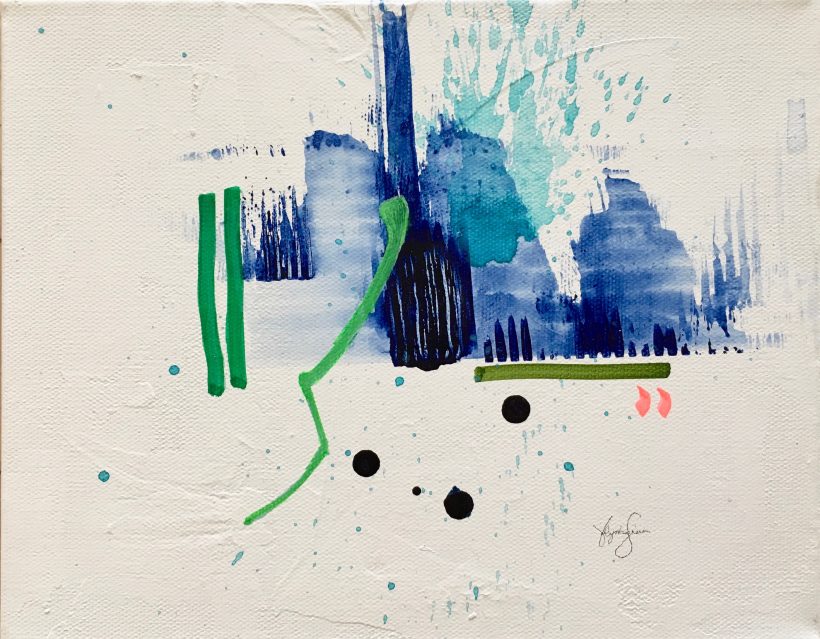
MF: Do you have any upcoming projects?
VG: My upcoming work for Radio Ocean includes finishing a Neon and painting collaboration with Joseph Mark Hanson, an artist living in Phoenix, AZ. Our work has been on hold since the pandemic has kept us in our respective towns. Quarantine living has also led to a mass of cardboard, packing materials and “disposable” masks and gloves. I’ll be using the cardboard to paint on and the other materials to make a hanging sculpture or sculptures.
Valyntina Grenier is a poet and visual artist. Her tête-bêche chapbook Fever Dream / Take Heart, was published by Cathexis Northwest Press, January 2020. Her work can be found in, Impossible Beast: Queer Erotic Poems, High Shelf Press, Global Poemic, Impermanent Earth, Lana Turner and Bat City Review. Find her at valyntinagrenier.com or Insta @valyntinagrenier.
